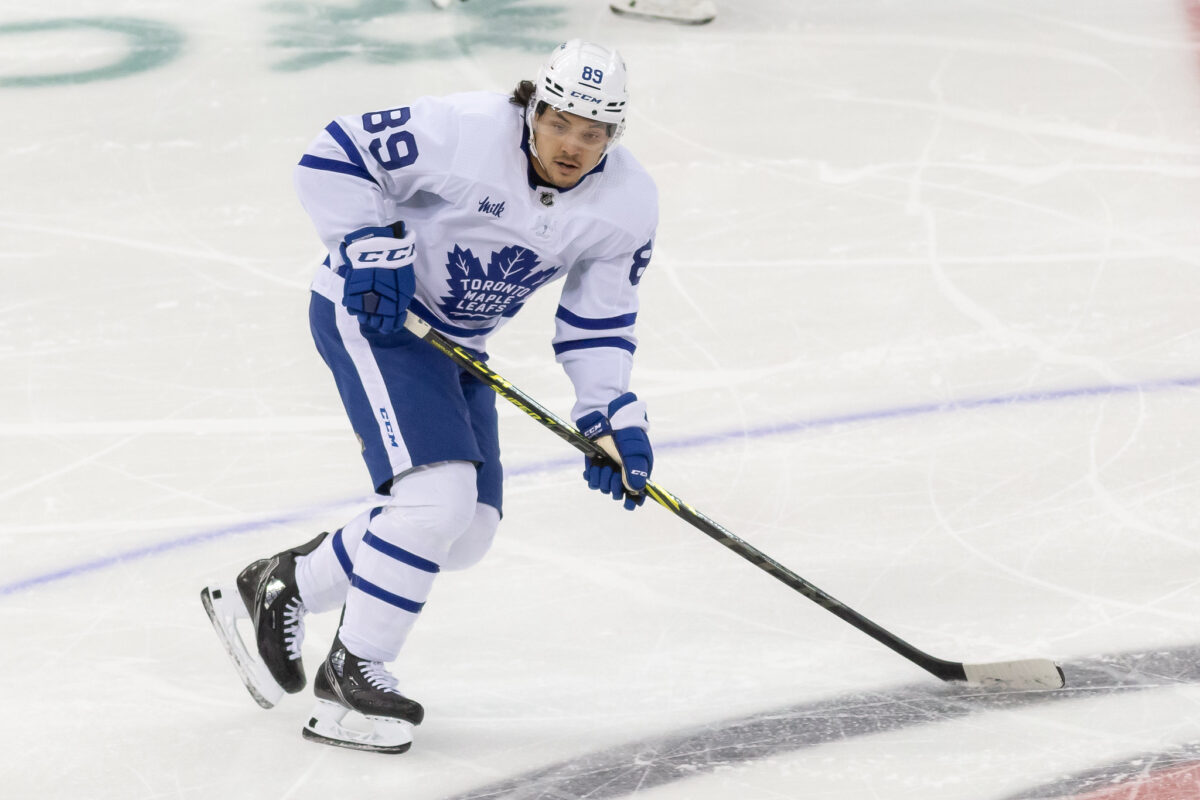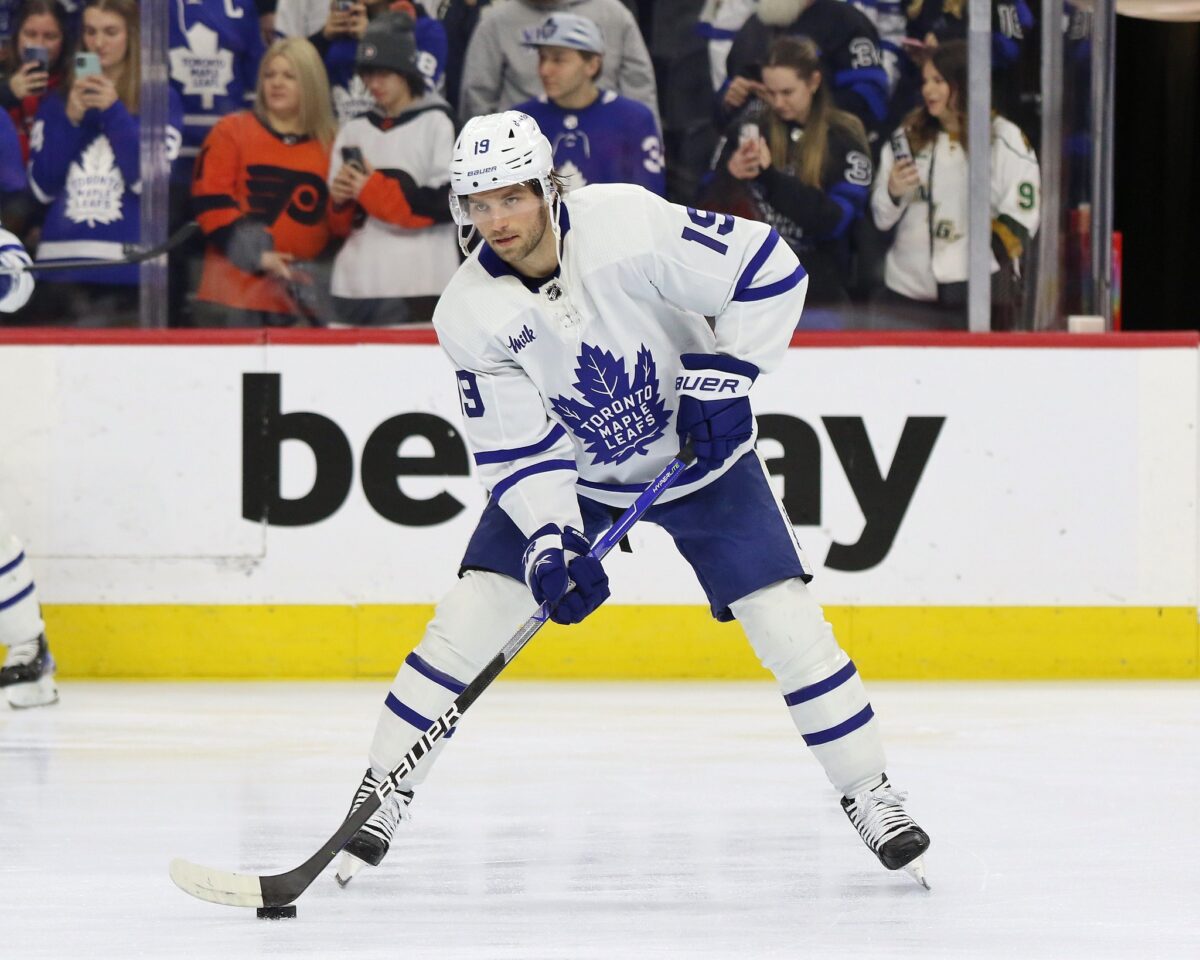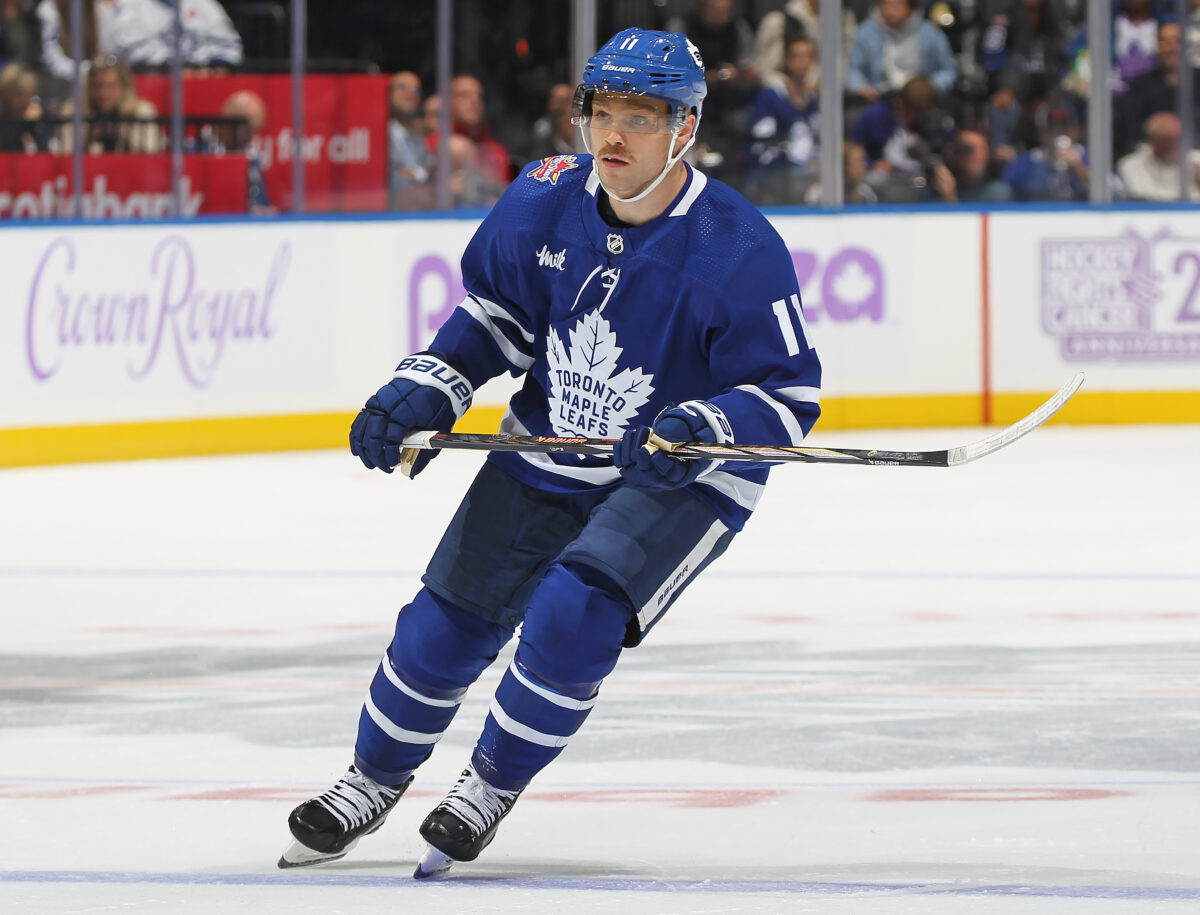For a few years, Nick Robertson was the Toronto Maple Leafs’ star prospect. However, his injury history stopped him from building off his great start with the organization, and after being moved to the American Hockey League’s (AHL) Toronto Marlies again this season, he was called up to the big club and played his first game against the Tampa Bay Lightning on Nov. 6.
He hasn’t looked back. Now a key member of a productive third line, he’s found his spot. It might not be that this is the season for Robertson’s emergence within the Maple Leafs as a key player; however, he’s been productive. He’s learning and honing his game.
In this post, I decided to take advantage of the Christmas break to review Robertson’s season and to speculate about his future with the team.
Robertson’s Life and Hockey Journey Thus Far
Robertson was born on September 11, 2001, in Pasadena, California. If that date is familiar, it’s no surprise. He’s a 9-11 baby, who was born on the day the United States was attacked by terrorists who flew airplanes into New York City’s twin towers.
Related: Maple Leafs Nick Robertson: The Cost of Chasing His Dream
He also was a 9-1-1 baby. While his brother Jason Robertson is much taller and larger than Nick (six inches in height and 25 pounds in weight), Nick barely survived his birth. Only a radical and desperate medical procedure allowed him to survive his first few days. He was hospitalized until American Thanksgiving Day – almost three months after his birth.
Standing at 5-foot-9 and weighing 178 pounds, the 22-year-old has talent and drive. Since his Peterborough Petes junior days, his agility and skill have been evident. He’s a dynamic force on the ice. The question has been (1) whether Robertson can translate those skills and drive to the NHL level and (2) whether he can stay healthy.

His journey in professional hockey began when he was picked by the Maple Leafs in the second round, 53rd overall, in the 2019 NHL Entry Draft. As noted, Robertson has dealt with numerous injuries, including a knee injury, a broken leg, and his last setback – a shoulder injury that required surgery. Right now, for the first time in a long time, he’s healthy.
Robertson’s Hockey Breakthrough Came in Junior Hockey
Before this season, Robertson’s breakthrough came in the Ontario Hockey League (OHL) with the Petes. In the 2018-19 season, his offensive abilities came to light, tallying an impressive 55 points in 54 games. However, during the following season, 2019-20, Robertson elevated his game to even greater heights. Despite playing fewer games (46), he put up a remarkable 86 points (with 55 goals and 31 assists). He was a star on the rise.
Related: Toronto Maple Leafs’ Nick Robertson Is Still Here & Ready to Go
Robertson’s transition to the professional league saw him splitting time between the NHL and AHL. These early NHL experiences had to be frustrating for Robertson. If he wasn’t injured, he was often moved simply because the organization was able to do so due to his waiver-exempt status.
Given that background, the 2023-24 season has been noteworthy for Robertson. With the Maple Leafs, he’s put up nine points in 20 games, including three goals and six assists. While the narrative was that he likely needed a top-six scoring role to prosper, his time with the big club has mostly been playing on the team’s third line.

His call-up in early November created a positive trickle-down effect that has improved the team. Max Domi was moved to center on the third line, and head coach Sheldon Keefe put the defensively savvy Calle Jarnkrok on that line. It’s been a productive line for the team.
The Third Line Gives Robertson a Place to Call Home
What might help Robertson the most is his relative obscurity playing on the third line. He hasn’t been turning heads, and that’s likely a good thing. Not being in the top-six gives him a chance to learn the game without the pressure. He’s doing just fine there, given his nine points in 20 games of limited minutes. He also gets a chance to contribute to special teams, which will add an extra layer to his learning curve and his ability to impact various game situations.
Analyzing Robertson’s game log for this season provides insights, and here are some generalizations I have drawn from my analysis.
Related: Today in Hockey History: Dec. 26
First, Robertson has consistently contributed points throughout the season. In that, he’s been a solid secondary scorer for the team. Second, while primarily playing on the third line, he’s been picked up some time on the power play. Because he can be given a primarily offensive shift every once in a while, his versatility adds to his value. The coaching staff is growing to trust his skills.
Third, Robertson has maintained a positive plus-minus rating. On the season, he’s been on the ice for more goals scored by his team than the opposition. That might be a simple concept, but it’s crucial and shows that the third line is not a liability. Fourth, Robertson’s ice time has varied from between 7 to 13 minutes per game, depending on the flow of the game and specific situations. He’s not playing top-six minutes, but he’s made an impact in the time he spends on the ice.

(Amy Irvin / The Hockey Writers)
Fifth, Robertson hasn’t taken a single penalty, showing his discipline, and that he isn’t water-bugging around the ice because he’s lost or often in trouble defensively. This is crucial, especially for a young player learning to balance offensive contributions with defensive accountability.
Finally, every once in a while, even in a limited role, Robertson has shown flashes of brilliance. He put up a three-point game against the Pittsburgh Penguins and scored a game-winning goal against Tampa Bay. These games show he has the potential to be a difference-maker.
Related: 7 Cool Things About Jarome Iginla: Calgary Flames Hall of Famer
With this experience at the NHL level, Robertson’s learning curve is expanding, and he’s been part of a mix of both highly successful and challenging games. In short, he’s learning how to navigate the demands of professional hockey in the NHL. This experience is crucial for his development.
Robertson Is Finding His Game This Season, Preparing for Next Season
In my mind, Robertson’s season demonstrates a young player finding his footing. He’s shown consistent offensive contributions, versatility on special teams, and the ability to impact the team’s performance positively. The variability in ice time and positive plus-minus rating suggest that he’s adapting well to the demands of the professional league.
Given the current makeup of the Maple Leafs roster, there’s not much of a chance that Robertson will ascend to the top-six – at least not this season. That’s a good thing because it will allow him to continue to develop in relative obscurity. There, he’ll learn his game playing beside veterans Domi and Jarnkrok. It might be a great place and space for Robertson – at least for this season.

(Photo by Claus Andersen/Getty Images)
However, next season things will likely change. There’s a good chance that Robertson – if he can stay healthy, which he seems to be doing this season – will have a good shot at playing in the top-six. If so, the season he spent on the team’s third line could have offered him a great season of development and learning.
A limited role this season, but an expanded role next season? It isn’t out of the realm of possibility for young Nick Robertson – once the Maple Leafs’ top prospect but now just an everyday player.
